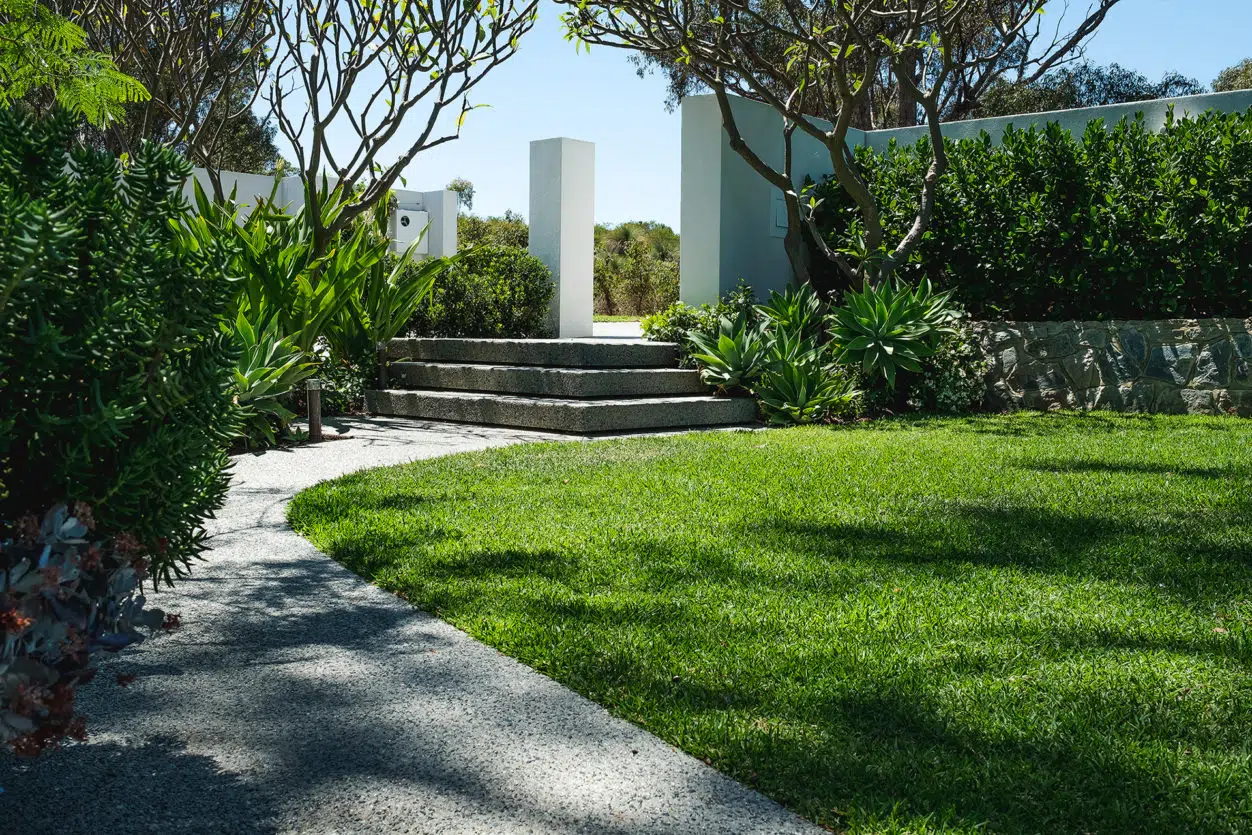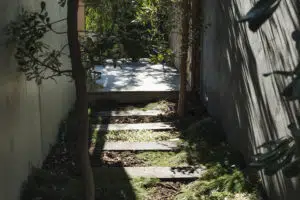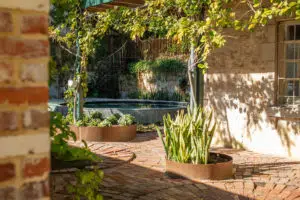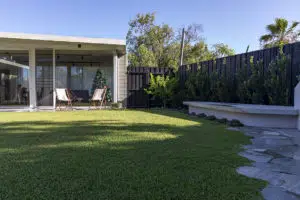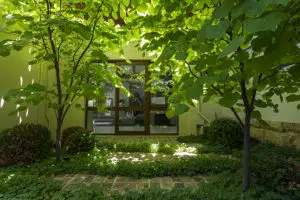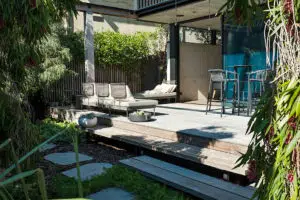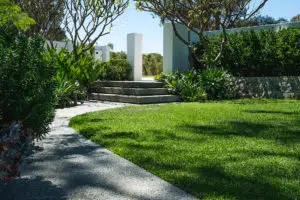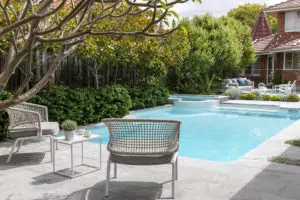Pavement style and placement can make or break a landscape design. When performing renovations of existing gardens, the paving is one of the first things we look at. Pavements play a major role in setting the tone of your space, and choosing the right one is dependent on the practicalities of your space, the style of your home and garden, and of course, your own personal tastes. A beautiful and functional pavement can add to your garden’s aesthetic appeal while providing inviting ease of movement. In the words of French poet Anatole France, “If the path be beautiful, let us not ask where it leads.”
Come with us as we lead you down some beautiful garden paths to check out some of TDL’s landscape designers’ favourite pavement styles.
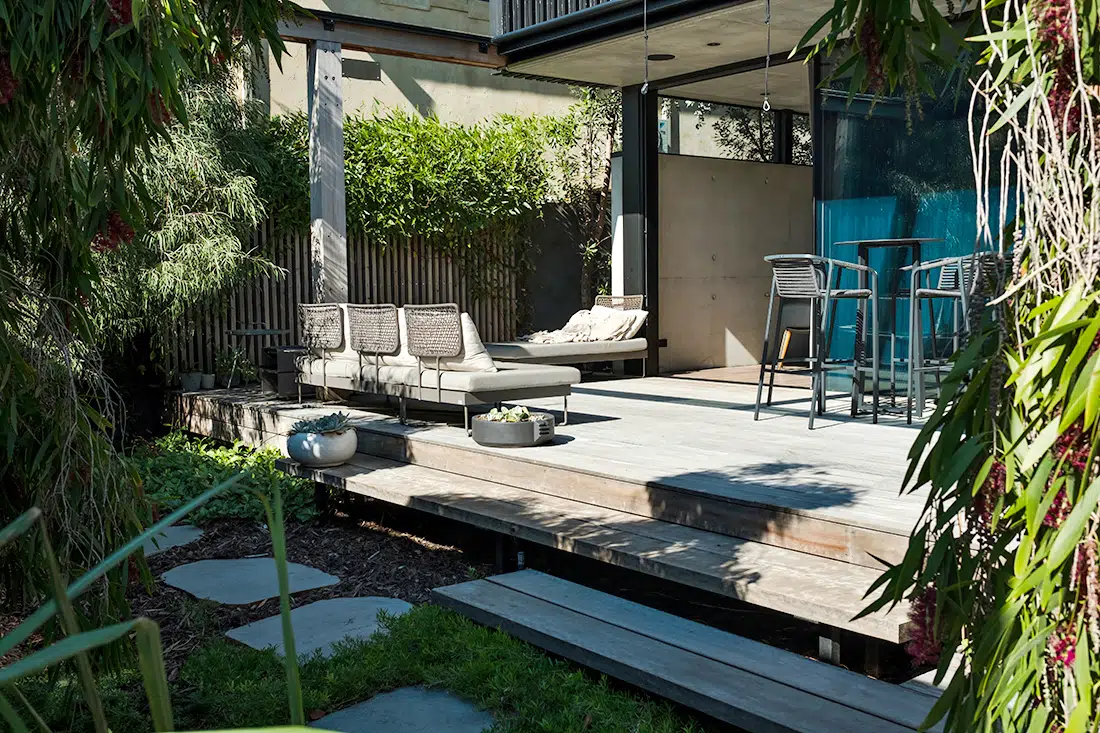 Bluestone steppers – A TDL mainstay
Bluestone steppers – A TDL mainstay
Bluestone is a premium paving stone that is versatile, cost-effective, and durable. This low-maintenance stone complements modern or traditional garden designs. Classically beautiful and always stylish- this stone is a popular choice amongst Perth homeowners. If you’ve looked at a few of our residential designs, you’ve probably seen organic bluestone used in at least one densely planted access path.
What is bluestone?
In Australia, bluestone is a variety of basalt characterised by blue-grey tones. It is available in organic shapes or clean-cut squares and rectangles of varying sizes.
How is bluestone used in landscaping?
A pathway created from the roughly hewn and irregular shapes of natural bluestone steppers invites you to explore, leading you to features in your garden such as an alfresco kitchen or swimming pool. When interspersed with a hardy ground cover, the contrasting cool tones of bluestone against green are irresistible. A note on using bluestone steppers this way: keep to the shadier parts of the garden. Bluestone is dark, and will absorb a lot of heat in full sun – this can cause the surrounding planting to struggle.
Suppose a more formal approach is to your taste. In that case, clean-cut square and rectangular shapes of bluestone steppers can create a seamless extension of your indoor and outdoor living areas. This stone is particularly suited to swimming pool decks or formal terraces.
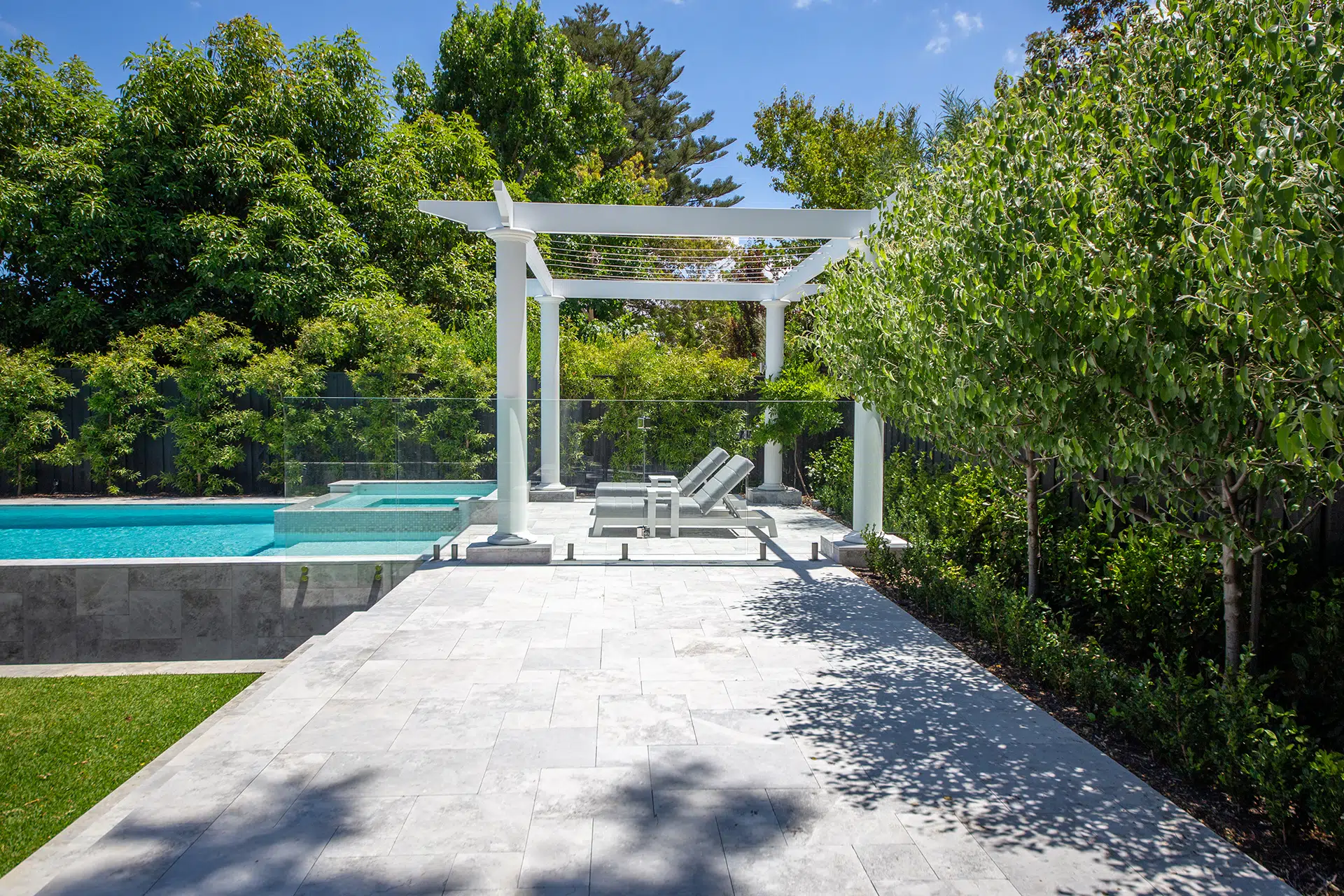 French pattern travertine
French pattern travertine
French pattern travertine is a classic, subtly elegant paving style. Using travertine in a French pattern is incredibly stylistically versatile, and suitable for traditional and contemporary themes. With some skilled backyard landscaping, the tempered complexity of a French pattern, combined with the natural, old-world charm of travertine can be the foundation of a truly impressive, luxe landscape.
What is travertine?
Travertine is a form of terrestrial limestone formed from deposits around hot springs in Europe. The stone is imported, this contributes somewhat to the cost of the stone. It is a luxe choice in Australia, but totally worthwhile for the right garden, and makes for an extremely durable and timeless choice.
What is a French Pattern?
A French pattern is created by laying tiles of differing sizes where lines intersect at different levels, to give the illusion of more space, while enhancing this beautiful stone’s natural texture and features. The French pattern is orderly and neat, but complex enough not to be boring.
Will travertine stand the test of time?
Travertine tiles and pavers can be utilised inside and out, it can be the perfect material for extending your living space outdoors. Travertine is naturally cool, resilient, resistant to chemicals, and it ages gracefully—the ideal choice for pool surrounds and courtyards.
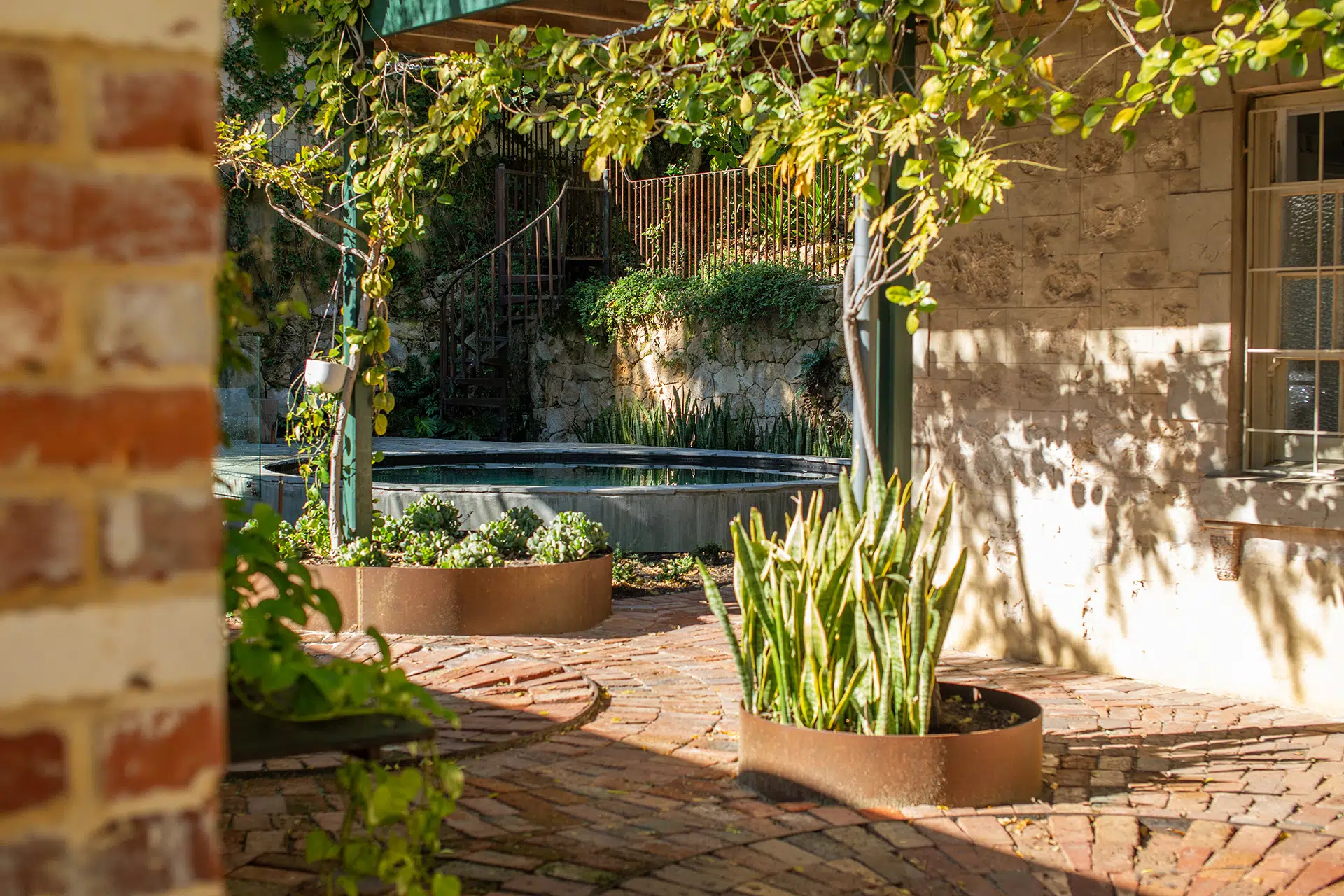 Recycled Brick Paving
Recycled Brick Paving
There’s nothing quite like enhancing your garden landscape with rustic recycled bricks. A particularly stylish touch for heritage homes, brick paving is versatile and cost-effective. Your landscape designer can help you achieve innovative industrial-warehouse chic or a pretty heritage garden by utilising recycled bricks.
Where do recycled bricks come from?
There is good supply of recycled bricks available through demolition companies, and quite often we’re able to recycle pre-existing bricks on site in garden renovations. However, if you’re looking for something that balances uniformity with rustic-flavour, brick suppliers will also age bricks to your taste.
How will a landscape designer utilise recycled bricks?
Your landscape designer may suggest recycled bricks if you have a small area to pave. Small areas are suited to smaller pieces, and bricks can be fitted closely or cut to fit. A variety of patterns such as circular, herringbone, or basketweave pattern can accomplish a look to suit your overall landscape design, depending on the space available. As well as pavements, you could consider garden walls, courtyards, and patios. Brick works well when mixed with other textures and finishes, but particularly for heritage homes, brick-on brick can work very well.
Will recycled bricks last?
Brick pavements are usually laid straight onto a level surface and provided they are firmly levelled and tamped down, even in high traffic areas; they can last a lifetime. Allowing ground cover and moss to flourish between bricks adds to their charm, and as brick ages it often looks more and more live-in and attractive.
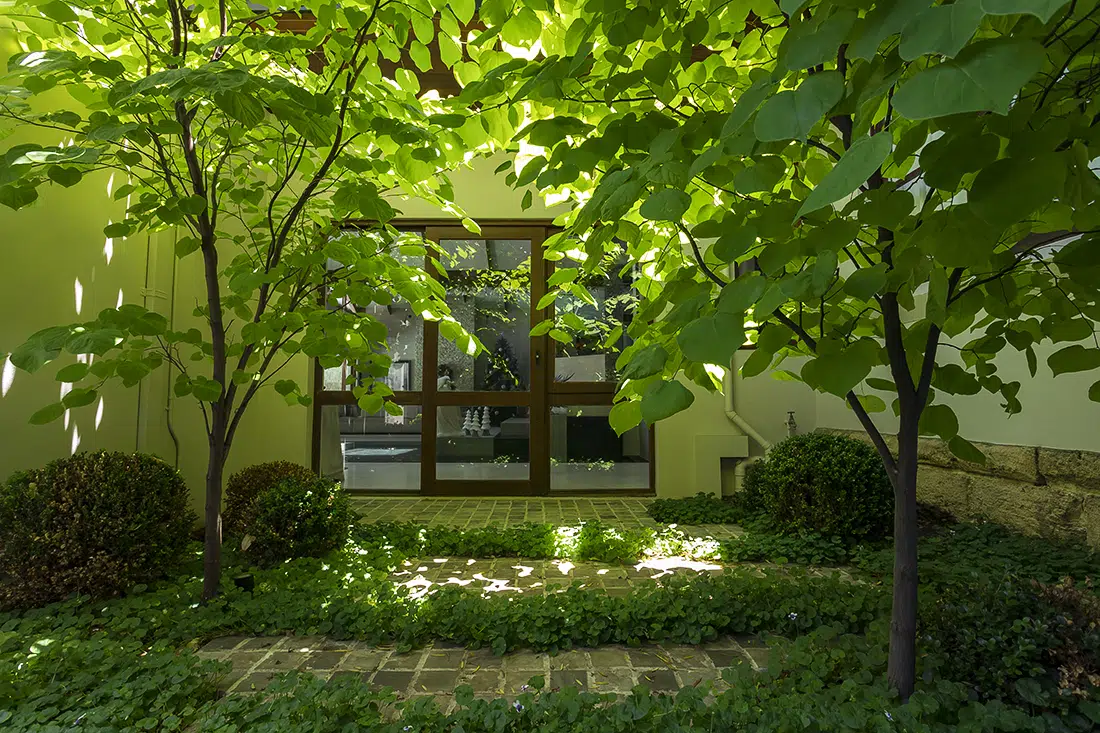 Cobblestones
Cobblestones
When you think of cobblestones, you may imagine Old-World charm, English or European pavements, and cottage gardens, but they are also a popular choice for contemporary gardens thanks to their unique organic geometry. Cobblestone paving can be the perfect marriage of order and nature, something intrinsic to the practice of landscaping. The cobblestone originated in Europe and was traditionally a river stone that became “cobbled” (or smoothed) through constant river movement.
Where do cobblestones come from?
Most cobblestones used by landscape designers today come from commercially quarried granite that has been worn or moulded to provide rounded corners.
Which landscape style suits cobblestones?
This durable stone can be used in small spaces to create pathways or courtyard/patio features. They can be laid creatively to produce patterns or on feature walls like recycled bricks. As the stones are uneven, they may not suit a pool deck, but a winding garden path with delicate ground cover plantings could be delightful. For a grand entrance to your property, a cobblestone driveway would impress.
As with most styles of pavement we have discussed, the cobblestone can set off a classic heritage home or an elegant contemporary house. Beauty is in the detail or simplicity that can be achieved in any garden design.
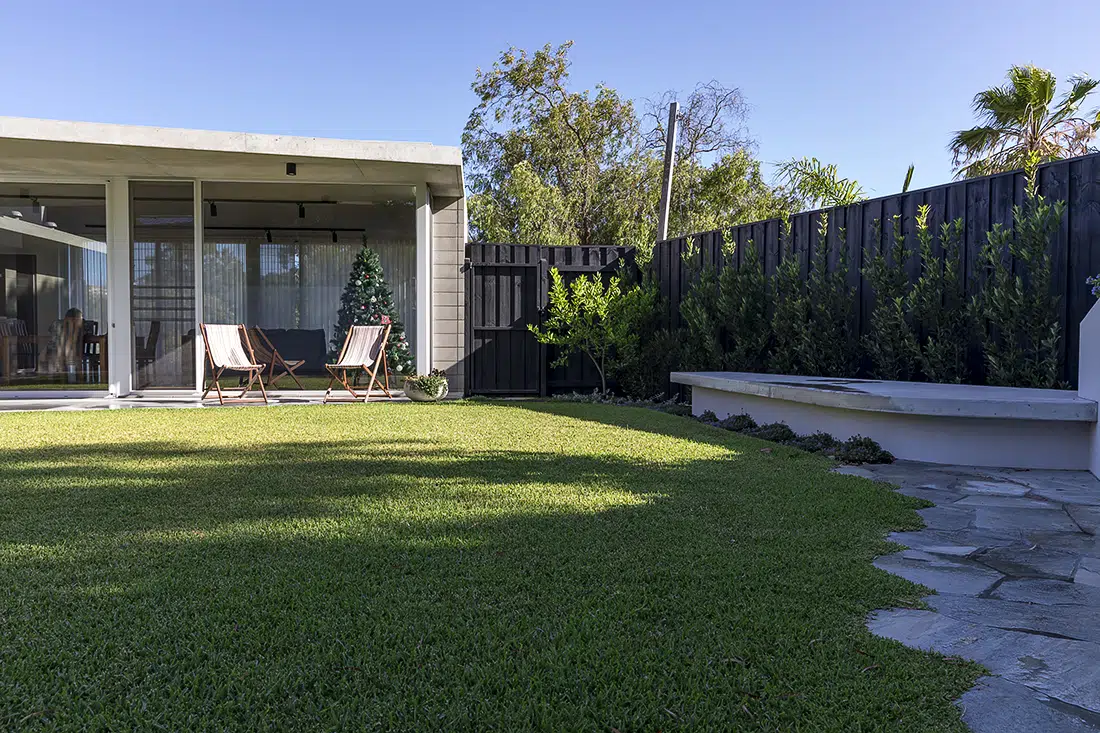
Crazy paving
Crazy paving will be a familiar sight for children of the 70s, but the way it is used in contemporary design tends to differ from the way it was used back in the day. Crazy paving is desirable in part thanks to the craftsmanship and care required to make it work, and in part for the raw, uncontrolled shapes it can make. This look is produced by fitting organic stone shapes together, similar to a mosaic, to create stylish outdoor spaces. Don’t be fooled by the name; crazy paving can pull your outdoor space together.
What is crazy paving?
Sometimes known as flagging or flagstone, this method takes irregularly shaped stone fragments of varying sizes to create a unique look every time. Rough cut bluestone, sandstone or limestone can be successfully used to crazy pave an elegant courtyard or an entire backyard.
This retro look is sustainable and complements any architectural style, from the 70s bungalow to the contemporary home. A particular highlight of crazy paving is the edge of the pavement, where the odd shapes of the stone meet the next surface. Crazy paving alongside grassed areas can cut exciting shapes in the grass, highlighting the organic nature of the stone.
Where to use crazy paving
- Small courtyards
- Driveways
- Patio or deck
- Walkways
- Edging
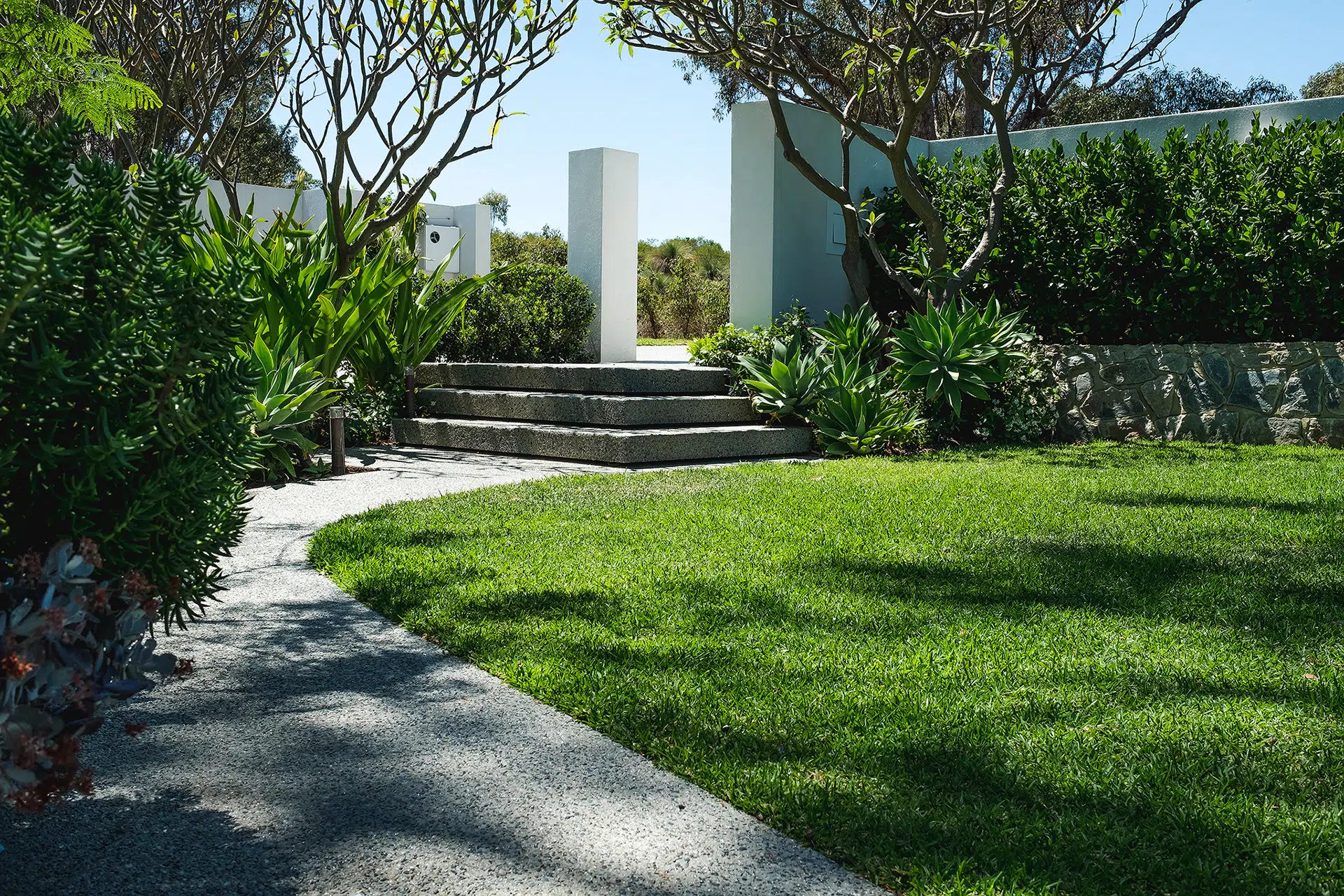 Decorative concrete for any surface
Decorative concrete for any surface
Decorative concrete can make for a contemporary, incredibly flexible and cost-effective pavement option. The fact that concrete can be formed to suit a space Your landscape designer can utilise decorative concrete to pave your outdoor living space very effectively, and concrete can be finished and mixed in countless intriguing ways.
What look can I achieve with concrete?
Any look you like! Concrete can be shaped and formed in any number of ways, and finished however you like. Polished concrete makes a foot-friendly surface, and is stylish in a classic architectural grey or with colour and aggregate. Exposed aggregate is a popular choice for driveway paving, it’s incredibly durable, has plenty of grip, with colours and blends available to suit most styles.
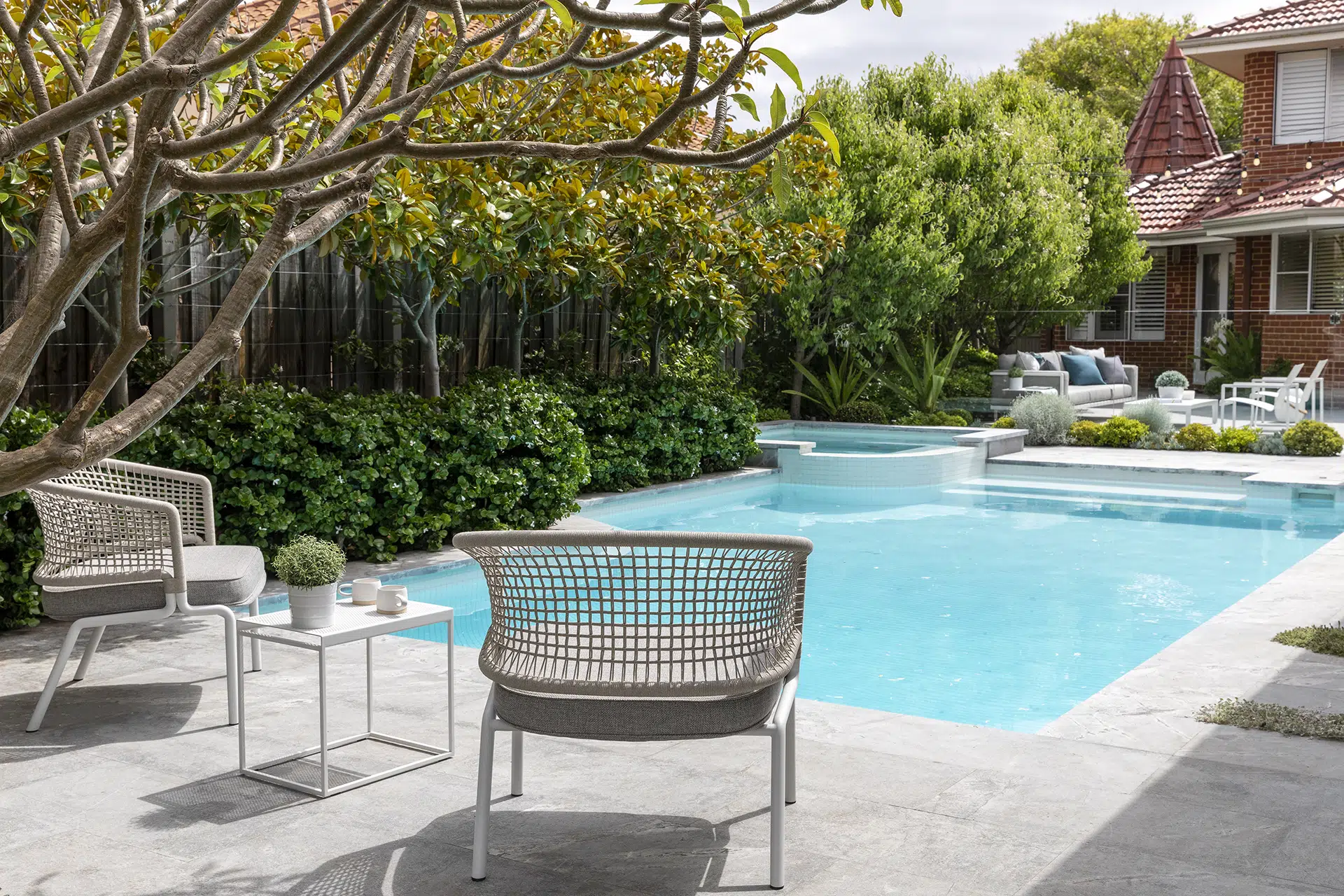 Atlantic Stone for Luxe Texture
Atlantic Stone for Luxe Texture
Atlantic stone is a natural stone paver that is contemporary yet classic. The luxurious Atlantic stone can extend your living area as it blends beautifully from the inside to the outside of your home.
What is Atlantic stone?
Atlantic stone is a unique lava stone quarried in China. This luxurious stone is as durable as granite with the look and feel of marble. The medium to dark grey stone can have green, amber, and black highlights throughout, depending on where it has been quarried.
Is Atlantic stone suitable for my landscape?
This stone is a popular choice for many homeowners due to its versatility and classic beauty. It is durable to withstand harsh weather conditions and heavy traffic while maintaining beauty which will last a lifetime. Atlantic stone has a smooth finish that can be prepared, so it is safe to use around your pool.
Pathways, pool decks and patios are ideal places to utilise this gorgeous stone so you can get the most out of your backyard.
Recycled railway sleepers for natural charm
If cost is a factor when considering your pavement surface, railway sleepers could be an innovative solution. The sturdy wooden beams discarded from old railway lines can be used as rustic steppers, and can make a great addition to naturalistic landscapes with a mix of textures and finishes.
How can I use railway sleepers?
Railway sleepers can create rambling paths, rustic steps, raised planter boxes, and decking as an organic alternative to stone. When combined with minimalist plantings or interspersed with stones, sleepers are just as comfortable in the contemporary landscape. When used to construct feature arches, they take on a modern look.
Will railway sleepers last long?
The size and weight of the wooden beams make them a great material for high traffic areas. Most reclaimed railway sleepers have been treated with creosote to protect them against rotting. If you have concerns about the presence of creosote in your garden, there are other treatment alternatives that your landscape designer can recommend.
Where to use railway sleepers
- Steps
- Paths
- Planter boxes
- Feature arches
- Decking
How to choose the right pavement for my home
There are so many options and combinations you can choose from when it comes to pavement styles and the materials available. Making the right choice for your home design while considering your lifestyle, aesthetics, and budget can feel overwhelming.
Engaging a landscape designer early in the design process will ensure that you achieve the best results. TDL’s landscape architects and designers can not only advise you on your pavement choices, but take a comprehensive approach to the design and construction of your whole landscape. TDL is uniquely placed to take you from initial sketch to construction completion and maintenance, with a team of skilled and professional designers, landscapers and horticulturalists. Get in touch today to discuss your landscaping requirements.

